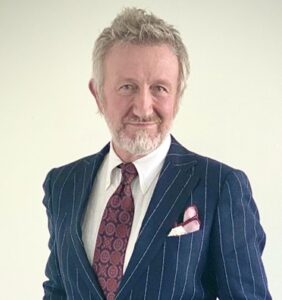Gynecomastia – Male Breast Reduction
If you’ve been seeking a solution, let our renowned cosmetic surgery practice guide you toward a more confident you.
Led by the highly experienced Dr. Tony Prochazka, our team specialises in the meticulous and precise art of gynecomastia procedures.
Whether it be through liposuction or other advanced techniques, we’re here to reshape your chest with expertise honed over 20 years.
Your Gynecomastia experience
Male breast reduction is more than a cosmetic change; it’s an enhancement of your confidence and self-image. By prioritising your comfort and care, we promise — no one will ever know you’ve had the procedure done, except for you and the new person you see in the mirror. Take the first step toward a more natural contoured chest.
Let’s Start the Conversation.
what is gynecomastia
Gynecomastia affects a significant percentage of men and is often a result of hormonal imbalances. While the cause may vary, the impact on self-esteem for many men is a common struggle.
Our approach is not simply a matter of surgery; it is a comprehensive method of understanding your unique situation and providing a personal care plan that results in a natural, unnoticeable chest contour.
Your Transformation Awaits: The gynecomastia procedure is a customised intervention, designed to restore a natural and balanced chest contour, enhancing your masculinity. Each step of the process, from consultation to recovery, is tailored to ensure your comfort and satisfaction.
The gynecomastia procedure
The gynecomastia procedure is tailored to each individual, focusing on precision to achieve the desired chest shape.
Liposuction removes excess fat.
If necessary, glandular tissue will be surgically removed via a small incision around the nipple.
Our meticulous attention to detail extends to all aspects of the procedure and pre op investigations, ensuring a safe, comfortable operation with minimal scarring.
FAQ
How long is gynecomastia recovery?
After your male breast reduction procedure, you may be a little sore and swollen.
You will have to wear a compression vest for 4-6 weeks.
We may recommend you come in for lymphatic drainage or gentle massage to assist with your healing.
Gynecomastia procedures generally heal quite quickly so you can return to work within a couple of days. Of course, depending on your type of work.
More strenuous activity after about 2-3 weeks.
Full recovery is about 4 – 6 weeks.
Ongoing Support: Our commitment to your care goes beyond the procedure itself. We provide ongoing support and follow-up appointments to ensure that you are satisfied with your results and address any concerns you may have.
How much does a gynecomastia cost?
When you are ready to explore your options, your inital consultation with an experienced Cosmetic Surgeon is important.
The price for your gynecomastia surgery– is tailored for each condition.
We are happy to give you an estimation of the fees to address your concerns.
Your costs include all procedure costs, theatre and anesthetist fees, and medication,
You are welcome to call, chat or email to get an estimation for you.
There are just a couple of questions we need to ask.
Your aftercare and post op visits are included in the procedure cost.
Your aftercare could also include lymphatic drainage and massage
What are gynecomastia risks?
Before undergoing any procedure at Aesthetica, we conduct thorough discussions about potential risks and complications.
As a result, it is important for you to decide whether the potential risks outweigh the benefits of the procedure.
All cosmetic surgery procedures, including gynecomastia procedures, may have risks and complications, however, rare.
Some risks and complications, but are not limited to the following –
- Not removing enough tissue or fatty deposits
- Bleeding
- Infection
- Poor wound healing
- Reaction to tapes or dressings
Options that may consider for your male breast reduction
We encourage you to explore all options and their expected results to find what, if anything is going to meet your expectations.


Aesthetica Image Centre is honoured to provide personalised care to address your concerns and help you achieve the look that reflects how you feel.
We Are a People Driven Team
It is important before you commit to anything that you find out as much as you can about us. We believe in providing our clients with the utmost care and privacy. We treat you with the respect and friendliness you expect from a close friend or family member.

Dr Tony Prochazka
Cosmetic Surgeon
Dr Tony a renowned cosmetic practitioner highly regarded within the Australian medical community. His practice extends across three prominent cities, including Melbourne, Sydney, and Shanghai. Dr. Prochazka has many years experience in a wide array of cosmetic procedures with a particular focus on cosmetic breast and facial surgery, encompassing breast augmentation, breast lift, face and neck lift, eyelid surgery, and fat grafting procedures.
You may also like…..
thread lift
Deciding whether thread lift is the right choice for you depends on various factors, including your aesthetic goals, medical history, and expectations for the procedure.
During your consultation at Aesthetica in Armadale, our experienced cosmetic surgeons will evaluate your concerns, answer any questions and guide you through the decision-making process with honesty and transparency.
Double chin treatment solutions
In today’s digital age, appearances matter more than ever, and the presence of a double chin can affect your self-esteem and how you present yourself, whether it’s during virtual meetings or in person.
At Aesthetica, we understand the impact a double chin or a more defined jawline can have on your self-image, and we’re here to empower you with effective solutions that will help you look and feel your best.
Cosmetic Surgery Questions
Undergoing any surgery can be a daunting experience. But when it is elective selecting the right surgeon to perform your procedure is crucial to ensure the best possible outcome. While it may seem logical to assume that any surgeon is qualified to perform any type of surgery, the reality is that not all surgeons have the same level of experience.
Get in touch
Consultations - in person or phone call,
range from complimentary to $300.00
Contact
03 9824 6134
info@aesthetica.com.au
Online Chat
Our friendly staff are rostered to reply to your online chat, no AI or call centre.
We look forward to your email and can provide you with
- Answers to specific questions
- Before and after photos
- Further details on a procedure or treatment
- Our personailsed aftercare
- Cost estimations as we tailor costs to each particular procedure or treatment
It is important to understand that any surgical, medical procedure or proven non-surgical treatment carries risks.
Before proceeding, you should seek a second opinion from an appropriately qualified health practitioner.
